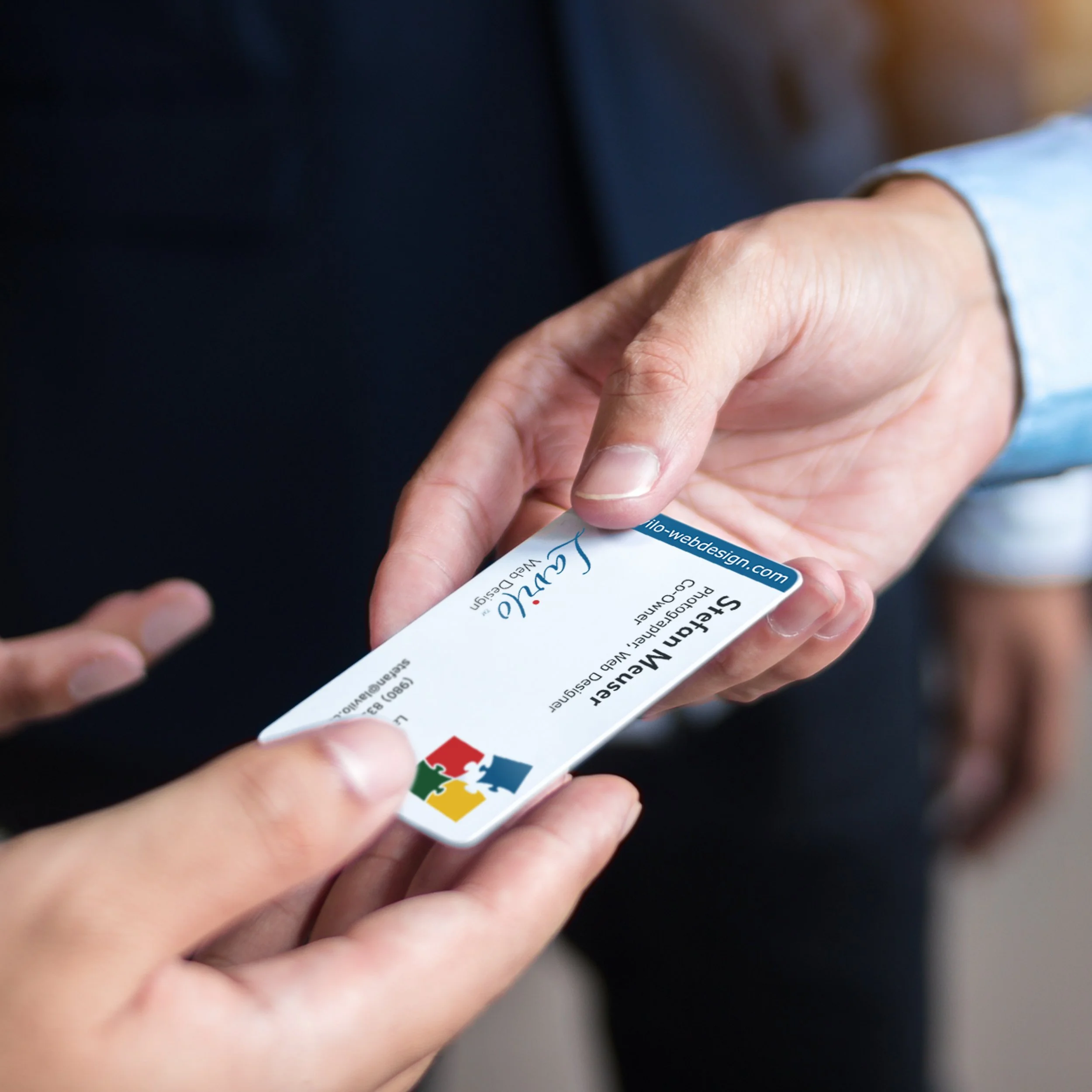Why Your Visual Brand Identity Matters
Of course, your website should be stunning. But a professionally branded website should be more than stunning — it should be memorable.
Memorable or unique websites have three things in common:
The logo fits the color choices.
The photos capture the mood.
The layout tastefully displays the content.
Every element seems to play its intended role. Defining the role of each design element is the task of brand design.
What Is Brand Design?
Brand design is an intentional process that creates a consistent system of visual design elements that is guided by the brand compass and aligns with the brand personality to form a characteristic, easily recognizable look and feel.
This memorable signature look is called visual identity.
The Most Common Visual Design Elements
When you work on each visual design element, such as your logo, colors, or photos, keep in mind that they are part of a larger whole, in which each design element plays its role. Think of an instrument in an orchestra. For example, if the violinists did their own thing, the symphony as a whole would sound disharmonious or just terrible. In the language of brand design, harmony means coherence.
Only the highest level of coherence between each visual design element can create this signature look that is hard to ignore and easy to remember. Hence, brand design experts go to great lengths to ensure they achieve this level of coherence for their clients.
Logo. Your logo is a symbol to identify and recognize your brand. It has to reflect your brand's personality and style. As you use your logo not only on a business card, brochure, or invoice but also on your website or as a favicon, I recommend avoiding intricate designs. Instead, keep your logo simple. That way, it looks great on a desktop, a smartphone screen, or as a tiny favicon. I also prefer logo designs that can be deconstructed, using parts, for example, to separate the page content on your website.
▶︎ How to Think About Logos
▶︎ What Are Vector Graphics?Colors. Colors are a crucial part of your brand's visual identity. They can set the mood of your website and attract a particular demographic of your audience. For example, female visitors appear to gravitate more towards pastels and pinks. Knowing the preferred colors of your audience can help anchor your brand design.
Typography. Typefaces play multiple roles. They need to look appealing and, at the same time, have to be readable and legible. A well-chosen typeface can emotionally expand your brand personality and give it a unique, recognizable character.
▶︎ Decoding TypographyIconography. Icons are a fun and simple way of communicating a complex message or concept. They can playfully guide visitors through your website without them having to read long texts, thus improving their user experience (UX) with your website.
Photography. A picture is worth a thousand words when the photo represents your own products and services. I know stock photos can be a lifesaver because they are easy to get and cost a fraction of professionally taken images. We use them in situations where we need to quickly go live with a website. However, stock photos are generic pictures and can look out-of-place. They are no replacement for your own images. If your brand stands for high-quality products and services, investing in professional photos can significantly enhance your visual brand identity because they are taken for your business, telling your story.
▶︎ Should You Invest in Professional Photos?
▶︎ Should You Use Stock Photos on Your Site?Video. Video can be a very effective visual design element. If you prefer videos over photos, make sure they are professionally recorded and edited, and follow your brand guidelines. However, they can cost more than high-quality images because they combine video footage with music and artistic effects.
Illustrations. I love illustrations because they are very flexible. Only limited by your imagination and your branding guidelines, of course, illustrations do not have to be limited to your logo. You can use them throughout your website, in print, or on social media. Their stylized rendering can be as effective as a professionally taken photo in explaining a complex concept or bringing a message across, but, different from photographs, they are not bound to the law of physics. Smaller, less sophisticated illustrations used to guide a visitor through your website are called icons.
▶︎ Are You Using Illustrations on Your Site?Layout. A good website layout places all visual design elements in a logical content flow, forming a coherent visual identity. When all elements seamlessly fit together, each playing their intended role, you create a strong visual brand identity.
▶︎ How to Make Your Website Unique
▶︎ 5 Tips to Make Your Web Page More Effective
▶︎ I Don't Want My Website to Look Like a Template
There are plenty of visual design elements you can use on a website. How many visual design elements you use and how sophisticated they are, is less important than what they contribute to making your visual brand identity more coherent, more unified.
Once you apply your visual design elements consistently across all media, you may find that your brand becomes stronger and your website more memorable.











